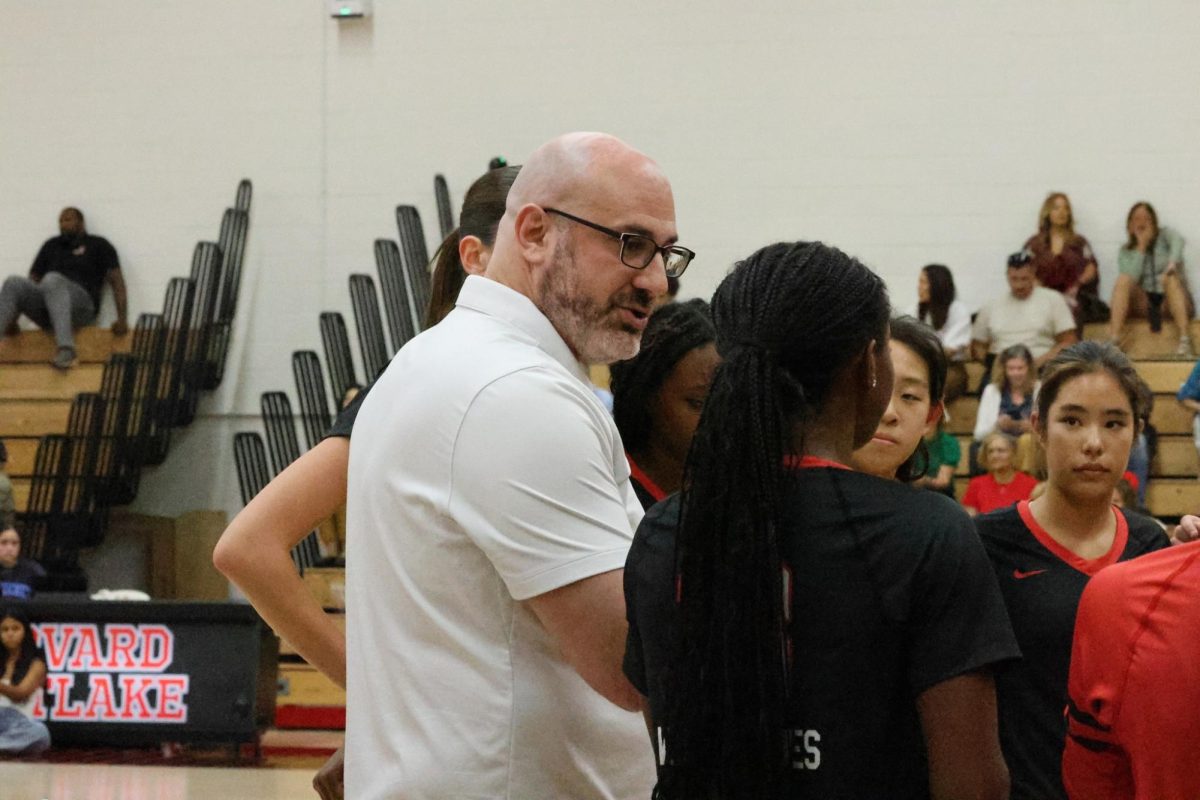The administration will look to diversify the faculty and conduct a climate assessment in the future as a result of a joint meeting between President Rick Commons, Head of School Jeanne Huybrechts and members of the BLACC in December, Commons said.
“I had the sense that we needed to start the conversation here rather than wait for someone to feel undervalued or underserved,” Commons said. “My goal was to understand what we as an institution can do to take steps forward, and it was my hope to do that on the same side [as students] rather than on opposing sides.”
The first of two concrete resolutions reached at the end of the meeting was to make an effort to diversify the faculty. Participants in the meeting noted that there are no African-American classroom teachers at the upper school, and there is only a couple at the middle school. A more diverse faculty would make the transition to Harvard-Westlake easier for an African-American student, BLACC Leader Nina Milligan ’16 said.
“When I came to Harvard-Westlake in seventh grade, I knew no one, lived in a neighborhood where not that many students from here lived and came from a public school,” Milligan said. “It was a big shock to go from a public school where there was a healthy population of African-Americans to a school where there aren’t that many, and then I didn’t see any teachers that look like me. [Having a diverse faculty] kind of helps you feel like you are in a safe place when there is someone there who understands you.”
Commons said that the school wants to continue to find extraordinary and inspiring teachers and simultaneously make the faculty more diverse.
“That is something that, prior to hearing from the BLACC and other members of the community, I and other administrators like [Head of Upper School Audrius Barzdukas] have been observing and have been concerned about: the fact that we don’t have a lot of diversity in our faculty,” Commons said. “It doesn’t match or even come close to matching the diversity in our students.”
The lack of diversity in faculty doesn’t affect learn but it may be a problem for students looking to relate to teachers about issues concerning racial identity.
“[The lack of faculty diversity] doesn’t prevent you from learning or being inspired because someone is of a different race, but when you are having concerns that are related to your racial identity and there is no one on the faculty that shares your racial identity, you lose something,” Commons said.
Historically, the school has used traditional channels to search for new teachers. Often times, the administrators involved in hiring (Commons, Huybrechts, Barzdukas, Head of Athletics Terry Barnum and Head of Middle School Jon Wimbish) use the Carney Sandoe recruiting services for independent schools, which Commons said leads to traditional candidates. In the future, these administrators will attend hiring fairs in places they have not gone before with the goal of finding excellent and inspiring teachers who also can diversify our faculty.
“Obviously you don’t pick who to like based on race, but it makes you feel a little more comfortable and can help you adjust to a new environment,” Milligan said. “Also, different teachers bring different perspectives. The presence of more African-American teachers would be a great start.”
Participants of the meeting also concluded that the school should have a thorough climate assessment, which is something that a lot of institutions do, Commons said. The school plans to bring in an independent third party to enable students to freely express their opinions through focus groups and surveys, amongst other mediums. This will probably happen next year, Commons said.
“[Conducting a climate assessment] is easy to accomplish, but what will come out of it will be recommendations, which will be hard to accomplish,” Commons said.
Additionally, members of the BLACC believe a diversity coordinator would be another positive step on campus, Milligan said. Milligan pointed to the recent production of the musical Westside Story as an instance where a diversity coordinator could have helped. One of the main themes in Westside Story is race, so it is difficult to avoid that subject, she said. The program for the play said that casting was colorblind.
“Colorblind is not that great a word to use because no matter what you will see someone’s race. They could have done something like Romeo and Juliette [instead of Westside Story] where race isn’t an issue,” Milligan said. “A diversity coordinator could have figured out a way to help them word what they were trying to say better and not fall into traps when talking about race.”
Milligan doesn’t believe people on campus are hostile on purpose, but she does believe discussing race is sensitive and requires education.
“I know that most of the time when Harvard-Westlake students say things it’s not coming from a place of hatred or trying to offend anyone because there is no one like that at HW, but it is a lack of education,” she said.
Milligan was satisfied with the meeting and the administration’s efforts.
“I really do think that [Commons] really wants to help us create change, but I don’t think it’s something that might happen next year or the year after,” she said. “It’s a process that will take a lot of time.”


































